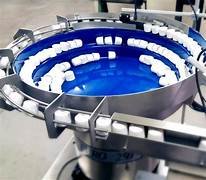Common Issues with Bowl Feeders and How to Troubleshoot Them

Perfection Conveyor Bowl feeders are crucial in many industries, especially in automated production lines, where they are used to orient, sort, and feed small components into assembly systems. However, like any machinery, bowl feeder manufacturers India can face operational challenges. Understanding common issues and their troubleshooting methods can help keep your feeder running smoothly and efficiently. Here’s a breakdown of some typical problems and solutions to maintain optimal performance.
1. Feeding Jams and Blockages
Feeding jams are one of the most common issues with bowl feeders. They typically occur when parts get stuck in the bowl or the track, preventing smooth movement.
Troubleshooting Tip:
- Check the Bowl and Track: Inspect for any debris or foreign objects that may have obstructed the movement of parts. Clear the area to ensure a free-flowing feed.
- Adjust the Orientation: Sometimes, improper part orientation can cause jams. Adjust the bowl feeder settings to ensure that parts are aligned and moving as intended.
- Examine the Bowl Angle: A bowl feeder set at too steep or too shallow an angle can cause parts to collect in one area. Adjusting the angle can help maintain consistent part flow.
2. Vibration Issues
Bowl feeders rely on vibrations to move components along the bowl. If the vibrations become inconsistent or fail, the feeding process can be disrupted.
Troubleshooting Tip:
- Check the Vibratory Motor: Inspect the motor and ensure it’s functioning properly. A faulty motor might be the reason for irregular vibrations.
- Adjust the Vibration Frequency: Different parts require different vibration frequencies. Make sure the vibration settings are appropriate for the components you are feeding.
- Inspect the Springs: The springs that control the vibratory motion might wear out over time, leading to inconsistent vibrations. Replacing or adjusting the springs could solve this issue.
3. Incorrect Part Orientation
Incorrect part orientation can prevent parts from moving correctly through the bowl feeder or cause misalignment, affecting the overall efficiency.
Troubleshooting Tip:
- Adjust the Track Configuration: Modify the configuration of the track to ensure that parts are correctly oriented before they exit the bowl.
- Check the Tooling: Over time, the tooling inside the bowl feeder may wear down, affecting the alignment of parts. Check the tooling for wear and replace if necessary.
4. Excessive Noise
Excessive noise from a bowl feeder can indicate mechanical issues, such as friction or misalignment of components.
Troubleshooting Tip:
- Lubricate Moving Parts: Ensure all moving components, such as springs, motors, and tracks, are well-lubricated. Lack of lubrication can increase friction and noise.
- Check for Loose Parts: Examine the bowl feeder for any loose components or misaligned parts that could cause rattling and excessive noise.
- Inspect the Bowl: A cracked or damaged bowl can lead to unwanted vibrations and noise. Inspect the bowl for signs of wear or damage and replace it if needed.
5. Overloading and Underfeeding
Both overloading and underfeeding can lead to inefficiency in the feeding process, where either too many or too few parts are fed into the assembly line.
Troubleshooting Tip:
- Adjust the Feed Rate: If parts are being overfed or underfed, adjust the feed rate to suit the production needs. Ensure the bowl feeder is set to deliver the correct number of components per cycle.
- Check the Bowl Capacity: Make sure that the bowl is not overloaded. Too many parts can cause jams or excessive wear on the system.
6. Inconsistent Flow of Parts
Sometimes the bowl feeder might not provide a steady and consistent flow of parts, which can lead to downtime and reduced productivity.
Troubleshooting Tip:
- Inspect for Blockages: As mentioned earlier, blockages or obstructions within the bowl or track can prevent parts from flowing freely. Ensure that the path is clear of debris.
- Adjust the Angle of Incline: A bowl feeder that’s set at the wrong incline angle may not move parts effectively. Adjusting the angle can improve the consistency of the feed.
7. Electrical or Power Failures
Electrical issues can sometimes prevent a bowl feeder from operating correctly, especially if the motor or electrical components are malfunctioning.
Troubleshooting Tip:
- Check the Wiring: Inspect all wiring and connections for any signs of damage or loose connections. Make sure everything is properly connected and secure.
- Test the Power Supply: Ensure that the bowl feeder is receiving the correct voltage and that the power supply is stable.
Conclusion
Bowl feeders are indispensable in many manufacturing processes, and maintaining their smooth operation is key to ensuring efficiency and productivity. By regularly checking for common issues like feeding jams, vibration problems, and incorrect part orientation, you can troubleshoot and resolve many of these issues quickly. Proper maintenance, timely adjustments, and regular inspections will keep your bowl feeder running smoothly and extend its lifespan.
Perfection Conveyor is India’s leading manufacturer of bowl feeder manufacturers India. You can contact them for further information regarding the mezzanine floor at